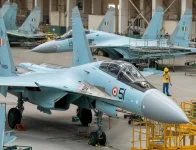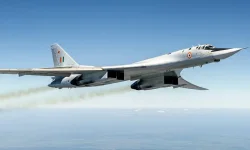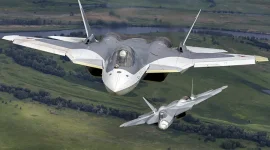- Views: 2K
- Replies: 8
As diplomatic and defence engagements between India and Russia intensify ahead of President Vladimir Putin’s expected visit to New Delhi in December 2025, reports regarding the manufacture of the Sukhoi Su-57 stealth fighter have sparked considerable debate.
A recent technical assessment provided by a Russian delegation from the Sukhoi Design Bureau suggests that Hindustan Aeronautics Limited (HAL) already possesses approximately 50% of the necessary infrastructure to produce this fifth-generation combat aircraft.
The report identifies the Nashik division—renowned for assembling the Tejas and Su-30MKI—as the likely centre for this ambitious project.
However, despite this optimistic appraisal, aerospace engineers and industry experts in India are urging caution. They argue that transitioning from manufacturing fourth-generation jets to building a true stealth fighter involves far more than simply expanding existing production lines.
While the Russian proposal suggests that knockdown kits could utilise shared assembly jigs for components like wings or fuselages, the technical reality is vastly different.
Stealth manufacturing requires exacting standards, rare materials, and sophisticated supply chains that HAL’s current facilities may not be equipped to handle immediately.
According to sources within the sector, a definitive conclusion on feasibility will only emerge after rigorous audits by Indian teams, which are expected to continue into early 2026.
The Proposed Deal: Scale and Technology Transfer
The current discourse is driven by accelerated negotiations for the procurement of two squadrons (36 aircraft) of the export-variant Su-57E.There is potential for this order to expand significantly to 114 or even 140 jets under a government-to-government agreement estimated to be worth between $15 billion and $20 billion.
Russia, facing continued Western sanctions and seeking to monetise its aerospace technology, has offered a substantial incentive: a Transfer of Technology (ToT) ranging from 60% to 70%.
Crucially, this offer includes co-production rights for the advanced AL-51F1 engine (internally known as Izdeliye 30), a critical component that has previously been a sticking point in export discussions.
Infrastructure Realities: The Nashik Facility
For HAL, the Russian pitch is undeniably attractive. The Nashik facility spans 1.2 million square feet and is currently active with the final assembly of the Tejas Mk1A and the overhaul of Su-30MKI fighters.In theory, 50% of the existing bays could be repurposed to handle Su-57 semi-knocked-down kits shipped from the Komsomolsk-on-Amur plant in Russia.
Nevertheless, the practical challenges are immense. A senior HAL official noted that stealth manufacturing is not merely about assembling avionics but involves complex engineering that borders on the artistic.
"Optimism is free; feasibility costs crores," the official remarked, highlighting the financial and technical gap between proposal and execution.
The Stealth Challenge: Precision vs. Ruggedness
The fundamental difference lies in the manufacturing philosophy. The Su-57 is designed with a radar cross-section (RCS) of under 0.1 square metres, achieved through specific edge alignments, serpentine air inlets, and radar-absorbent coatings.Current production at Nashik is optimised for fourth-generation aircraft, which utilise aluminium-lithium alloys and hydraulic systems with mechanical tolerances measured in millimetres.
While some tooling for basic geometry might be adaptable, stealth aircraft require sub-micron precision. The airframes rely on carbon-fibre reinforced polymers (CFRP) infused with nanomaterials to absorb X-band radar waves.
These materials must be fabricated in pristine, climate-controlled cleanrooms to prevent microscopic cracks that could compromise the aircraft's stealth signature.
Aerospace consultant Vivek Kapur emphasises the fragility of this process compared to the robustness of previous generations. "Gen-4 is assembly-line robust; stealth is artisanal fragility," he observed. "A single delamination in a radar-absorbent material layer, and you’ve got a $100 million brick."
Supply Chain and Engine Concerns
Beyond the airframe, the supply chain presents a significant bottleneck. The Su-57’s new Izdeliye 30 engine relies on specialised titanium forgings from VSMPO-Avisma, a company heavily targeted by Western sanctions.Although HAL has experience integrating GE F404 engines for the Tejas, it currently lacks the cryogenic machining facilities required for the single-crystal turbine blades used in the Russian engine.
Furthermore, the physical design of the aircraft poses re-tooling challenges. The Su-57 features diverterless supersonic inlets (DSI) which require custom moulds, unlike the axi-symmetric designs of the Su-30MKI.
Early estimates suggest that adapting the Nashik plant could cost between ₹5,000 and ₹7,000 crore, with a timeline of three to five years to achieve 70% indigenisation.
Impact on Existing Projects
There is also concern regarding HAL's capacity to deliver on existing commitments. The Nashik plant recently inaugurated a third production line for the Tejas Mk1A in October 2025 to meet a backlog of 83 orders, with more expected for the Mk2.Additionally, the facility handles Su-30MKI license builds and helicopter overhauls.
Diverting half of the production capacity to the Su-57 could severely impact the delivery of the Tejas, which is already facing schedule pressures. A delay in Tejas deliveries would be unwelcome news for the Indian Air Force (IAF), which is focused on rebuilding its squadron strength.
The Path Ahead
Officials involved in the Advanced Medium Combat Aircraft (AMCA) programme have described the Russian "50% readiness" claim as salesmanship rather than engineering reality.They point out that while Nashik has CNC machines and wind tunnels, it lacks the specific certification for low-observable maintenance, such as Faraday-caged hangars.
The true test will come in the first quarter of 2026, when joint HAL-Sukhoi teams are scheduled to conduct feasibility probes. These audits will test Nashik's metrology labs against the strict tolerances required for stealth compliance.
If successful, the project could follow the trajectory of the Su-30 programme, moving from kit assembly to full local manufacturing.
However, sceptics fear a scenario where India becomes an assembler with limited technology absorption, potentially diverting critical funds away from its indigenous stealth research.




